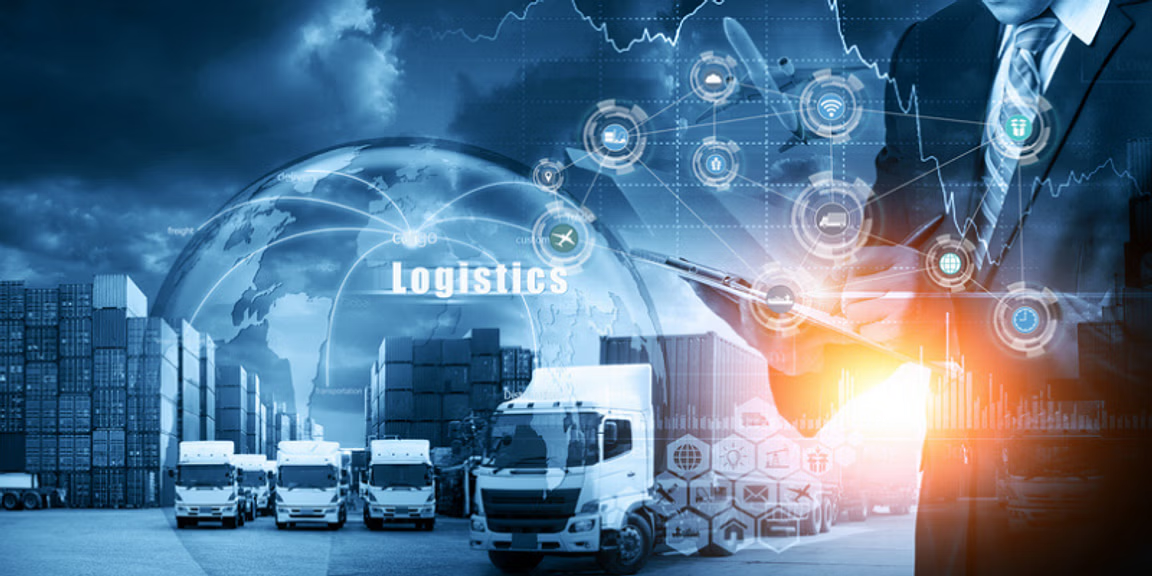
India presents a plethora of opportunities for global logistics providers. According to a McKinsey report, the Indian logistics market is pegged at $200 billion, and is set to grow further at over 10% CAGR in the next 5 years to reach around $320 billion to $330 billion.
However, this market is disorganised, featuring numerous unorganised players. The two most unorganised sectors that dominate the logistics market are road transport and warehousing. Road transport is deeply fragmented in India with truck owners with fewer than five trucks constituting more than half of all goods vehicles on the roads.
The logistics sector incurs a substantial cost, i.e., approximately 14% of India’s GDP, which is significantly higher than in developed economies. Even a modest reduction in these costs could translate into a staggering amount in savings.
Some of the factors that contribute to these challenges are:
1. Operational Inefficiencies: Indian trucks, one of the lifelines of logistics, are plagued by delays, underutilisation, and frequently run empty. They operate for only 15 to 16 days each month, in contrast to their global counterparts, who cover distances of 500 to 600 kilometres per day. A significant portion of this mileage, approximately 40%, is spent on empty runs.
2. Intermediaries: The logistics chain in India typically involves 2 to 3 intermediaries between the truck driver and the consignor. These intermediaries often charge commissions, causing truck owners to lose a substantial 15% to 20% of their revenue.
3. Limited Technology Adoption: Transport and warehousing players in India exhibit a relatively low level of technology adoption. This lag in embracing modern technology hampers efficiency and transparency within the sector.
4. Indirect Costs: The logistics industry faces high indirect costs due to unpredictable supply chains and inadequate first and last-mile connectivity. These challenges result in increased operational complexities and costs.
In recent years, there has been a growing buzz around the potential game-changing impact of implementing the Unified Logistics Interface Platform (ULIP) in India. This technology-driven solution promises to significantly improve logistics visibility, cut down costly delays and transport expenses, and enhance overall enterprise efficiency.
According to the World Bank’s “Doing Business 2020” report, it takes an average of 14 days to clear customs for imports in India, significantly higher than the global average of 8 days. This is where ULIP steps in.
A digital platform designed to streamline logistics operations, ULIP offers real-time tracking and monitoring of shipments, providing logistics stakeholders with unprecedented visibility into the movement of goods. This helps in predicting and mitigating delays. By optimising routes, minimising idle time, and reducing paperwork, ULIP can significantly reduce transportation costs. It also minimises costly delays at various checkpoints. Automation and digitisation of logistics processes through ULIP can enhance overall enterprise efficiency, leading to quicker decision-making and smoother operations.
ULIP holds a crucial role due to India’s aspiration for an “Aatmanirbhar Bharat” in the logistics sector. It aims to bring down logistics costs within the country, making India globally competitive by the year 2030. India’s recent climb in the LPI rankings in 2023 reflects its commitment to elevating its logistics efficiency on the global stage and ULIP will play a crucial role in the same. ULIP is instrumental in establishing a data-driven decision-support mechanism that fosters an efficient and transparent logistics ecosystem, aligning with India’s vision for self-reliance in this critical sector.
According to a study conducted by a leading logistics company in India, the implementation of ULIP led to a 30% reduction in shipment delays. Real-time tracking and alerts enabled faster responses to unforeseen challenges.
The Indian Institute of Logistics estimates that the adoption of digital platforms like ULIP can lead to cost savings of up to 20% for logistics companies, including savings in fuel costs, labour costs, and reduced maintenance expenses due to better maintenance scheduling.
The World Bank notes that a 10% reduction in logistics costs can increase a country’s GDP growth by 1%, indicating ULIP’s potential contribution to India’s economic growth. A survey of logistics service users in India revealed that 80% of respondents reported higher satisfaction levels after the implementation of ULIP due to improved transparency and reduced delays.
For instance, FASTag has changed how vehicles ply the roads now. FASTag is a vehicle-mounted electronic toll collection system revolutionising the way toll payments are handled in India. Operated by 23 banks under the governance of NPCI (National Payment Corporation of India) and NHAI (National Highway Authority of India), FASTag employs Radio Frequency Identification (RFID) technology to streamline toll collection by eliminating the need for human intervention. Positioned on the vehicle’s windshield and linked to a prepaid account, FASTag enables seamless, on-the-go toll payments as vehicles pass through toll gates, bypassing the traditional pit stop for payments. This not only enhances convenience but also leads to fuel and time savings on every toll plaza encounter, contributing to reduced traffic congestion at a broader scale.
Furthermore, FASTag offers toll expense tracking through SMS and email alerts, ensuring users stay informed about their account activity. Beyond these advantages, FASTag extends its benefits to include emergency road assistance and accidental death coverage, providing comprehensive support for travellers and transporters alike.
In terms of logistics, it has already emerged as a game-changer. It has replaced unreliable and inefficient SIM tracking methods often plagued by disruptions due to drivers turning off their phones or changing devices during transit.
Even today, the logistics sector leans heavily on road transportation, accounting for 60% of the total movement, reflecting a unimodal orientation. In the World Bank’s Logistics Performance Index (LPI) of 2018, India’s ranking stood at 44, a position that could be attributed to the historically limited policy support and government attention afforded to the nation’s $200 billion logistics industry. However, recent efforts by the Government of India (GoI) have yielded positive results, evidenced by a six-place climb in the LPI rankings in 2023. This transformation is a direct result of the groundbreaking National Logistics Policy (NLP) introduced in September 2022 under the leadership of Prime Minister Narendra Modi.
The ULIP, a key component of the National Logistics Policy (NLP), has been instrumental in revolutionising India’s logistics landscape. With approximately 70 million API transactions recorded on the ULIP portal, seamless data exchange has been achieved across diverse systems. ULIP’s integration of 33 systems from seven ministries via 106 APIs, covering over 1600 data fields, has consolidated digital data related to transportation.
Prominent APIs include FASTag, Vahan, Sarathi, Port Community Systems (PCS), Freight Operations Information System (FOIS), Air Cargo Message Exchange System (ACMES), Air Cargo Community System (ACCS), and ICEGATES.
The implementation of ULIP in the Indian logistics industry has the potential to be a game-changer. It can address long-standing challenges such as delays, high costs, and inefficiencies, leading to a more competitive and efficient logistics ecosystem.
(Rahul Mehra is the Co-founder of Roadcast, an AI powered digital logistics platform)
Edited by Megha Reddy
(Disclaimer: The views and opinions expressed in this article are those of the author and do not necessarily reflect the views of YourStory.)




![Read more about the article [Funding alert] Darwinbox turns unicorn; raises $72M in Series D round led by Technology Crossover Ventures](https://blog.digitalsevaa.com/wp-content/uploads/2022/01/Image42iw-1643037235793-300x150.jpg)





